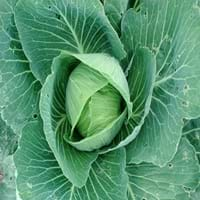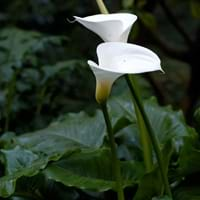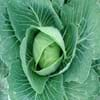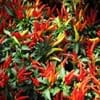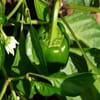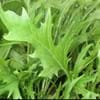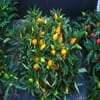What is
Life Span
Annual
Perennial
Type
Vegetable
Bulb, Flowering Plants
Origin
Europe
South Africa, Swaziland
Types
Chinese Cabbage, Napa Cabbage
Passionfruit, Fire glow, Gem rose, Blaze, Crystal blush
Number of Varieties
Not Available
33
99+
Habitat
Farms, Fields, Subtropical climates
Swamps
USDA Hardiness Zone
4-7
8-10
AHS Heat Zone
6-1
10-4
Sunset Zone
A1, A2, A3, H1, H2, 1a, 1b, 2a, 2b, 3a, 3b, 4, 5, 6, 7, 8, 9, 10, 11, 12, 13, 14, 15, 16, 17, 18, 19, 20, 21, 22, 23, 24
2a, 2b, 5, 6, 8, 9, 12, 13, 14, 15, 16, 17, 18, 19, 20, 21, 22, 23, 24
Habit
Clump-Forming
Clump-Forming
Information
Plant Size
Minimum Height
22.90 cm
99+
60.00 cm
99+
Minimum Width
15.20 cm
99+
60.00 cm
99+
Plant Color
Flower Color
Yellow
Blue, Dark Purple, Light Purple, Red, White
Flower Color Modifier
Bicolor
Bicolor
Fruit Color
Not Available
Not Available
Leaf Color in Spring
Light Green
Dark Green
Leaf Color in Summer
Not Available
Green, Dark Green
Leaf Color in Fall
Not Available
Green, Dark Green
Leaf Color in Winter
Not Available
Green, Dark Green
Shape
Leaf Shape
Oblong Circular Round
Arrowhead
Thorns
No
No
Season
Plant Season
Spring, Summer, Fall, Winter
Autumn, Spring, Summer
Growing Conditions
Sunlight
Full Sun, Partial Sun
Full Sun, Part sun, Partial shade
Growth Rate
Fast
Medium
Type of Soil
Loam, Sand
Clay, Loamy
The pH of Soil
Neutral
Neutral, Slightly Acidic
Soil Drainage
Well drained
Average
Bloom Time
Spring, Summer
Spring, Summer
Repeat Bloomer
No
Yes
Tolerances
Drought
Wet Site
Care
Where to Plant?
Container, Ground
Container, Pot
How to Plant?
From bulbs, Seedlings
From bulbs, From Rhizomes, Seedlings, Transplanting
Plant Maintenance
Low
Medium
Watering Plants
Watering Requirements
Keep ground moist, Keep the ground moist but not water-logged, Requires regular watering
Over-watering can cause leaf problems or root diseases, Requires a lot of watering
In Summer
Lots of watering
Lots of watering
In Spring
Moderate
Moderate
In Winter
Average Water
Average Water
Soil
Soil pH
Neutral
Neutral, Slightly Acidic
Soil Type
Loam, Sand
Clay, Loamy
Soil Drainage Capacity
Well drained
Average
Sun Exposure
Full Sun, Partial Sun
Full Sun, Part sun, Partial shade
Pruning
Remove damaged leaves, Remove dead leaves
Prune to stimulate growth, Remove dead or diseased plant parts, Remove deadheads
Fertilizers
Nitrogen, Phosphate, Well-rotted manure
All-Purpose Liquid Fertilizer
Pests and Diseases
Alternaria Leaf Spot, Anthracnose, Bacterial soft rot, Blackleg, Damping off, Damping-off, Downy mildew, Flea beetle, Flea Beetles, Fungal Diseases, fungus, Red blotch, Watery soft rot
Armillaria mellea, Gray mold, Leaf spot, Powdery mildew, Pythium rot, Rhizoctonia crown rot, Root rot, Thripes
Plant Tolerance
Drought, Heat Tolerance
Drought
Facts
Flowers
Showy
Yes
Flower Petal Number
Single
Single
Fruits
Showy Fruit
No
No
Edible Fruit
No
No
Fragrance
Fragrant Flower
No
Yes
Fragrant Fruit
No
No
Fragrant Leaf
Yes
No
Fragrant Bark/Stem
Yes
No
Showy Foliage
Yes
Yes
Showy Bark
No
No
Foliage Texture
Coarse
Coarse
Foliage Sheen
Not Available
Glossy
Evergreen
No
Yes
Invasive
Sometimes
No
Self-Sowing
Yes
No
Attracts
Beetles, Flies, Insects
Not Available
Allergy
Throat itching
Diarrhea, Intestinal gas, Vomiting
Benefits
Uses
Aesthetic Uses
Not Available
Beautification, Bouquets
Beauty Benefits
Not Available
Not Available
Edible Uses
Yes
Yes
Environmental Uses
Air purification, Food for animals, Food for insects
Air purification
Plant Benefits
Medicinal Uses
Anti-oxidant, Antioxidants, Digestion problems, Low calories, Nutrients, Skin Disorders
Not Available
Part of Plant Used
Fruits, Leaves
Flowers
Other Uses
Food for animals, Used As Food, Used for its medicinal properties, Used as a spice, Used in salads
Showy Purposes
Used As Indoor Plant
No
No
Used As Outdoor Plant
Yes
Yes
Garden Design
Container, Edible, Herb / Vegetable
Not Available
Scientific Name
Botanical Name
BRASSICA rapa( Pekinensis Group)
Zantedeschia Aethiopica
Common Name
Celery Cabbage, Napa Cabbage
Calla Lily
In Hindi
अजवाइन गोभी
Calla Lily
In German
Sellerie Kohl
Calla-Lilien-
In French
céleri chou
Lys calla
In Spanish
apio col
Cala
In Greek
σέλινο Λάχανο
Calla κρίνος
In Portuguese
aipo couve
Calla
In Polish
seler Kapusta
Calla Lily
In Latin
Brassica apium
Calla Lilium
Classification
Kingdom
Plantae
Plantae
Phylum
Magnoliophyta
Magnoliophyta
Class
Magnoliopsida
Liliopsida
Order
Brassicales
Alismatales
Family
Brassicaceae
Araceae
Genus
Brassica
Zantedeschia
Clade
Angiosperms
Angiosperms, Monocots
Tribe
Brassiceae
Zantedeschieae
Subfamily
Not Applicable
Aroideae
Number of Species
Not Available
1
99+
|
||
|
||
|
